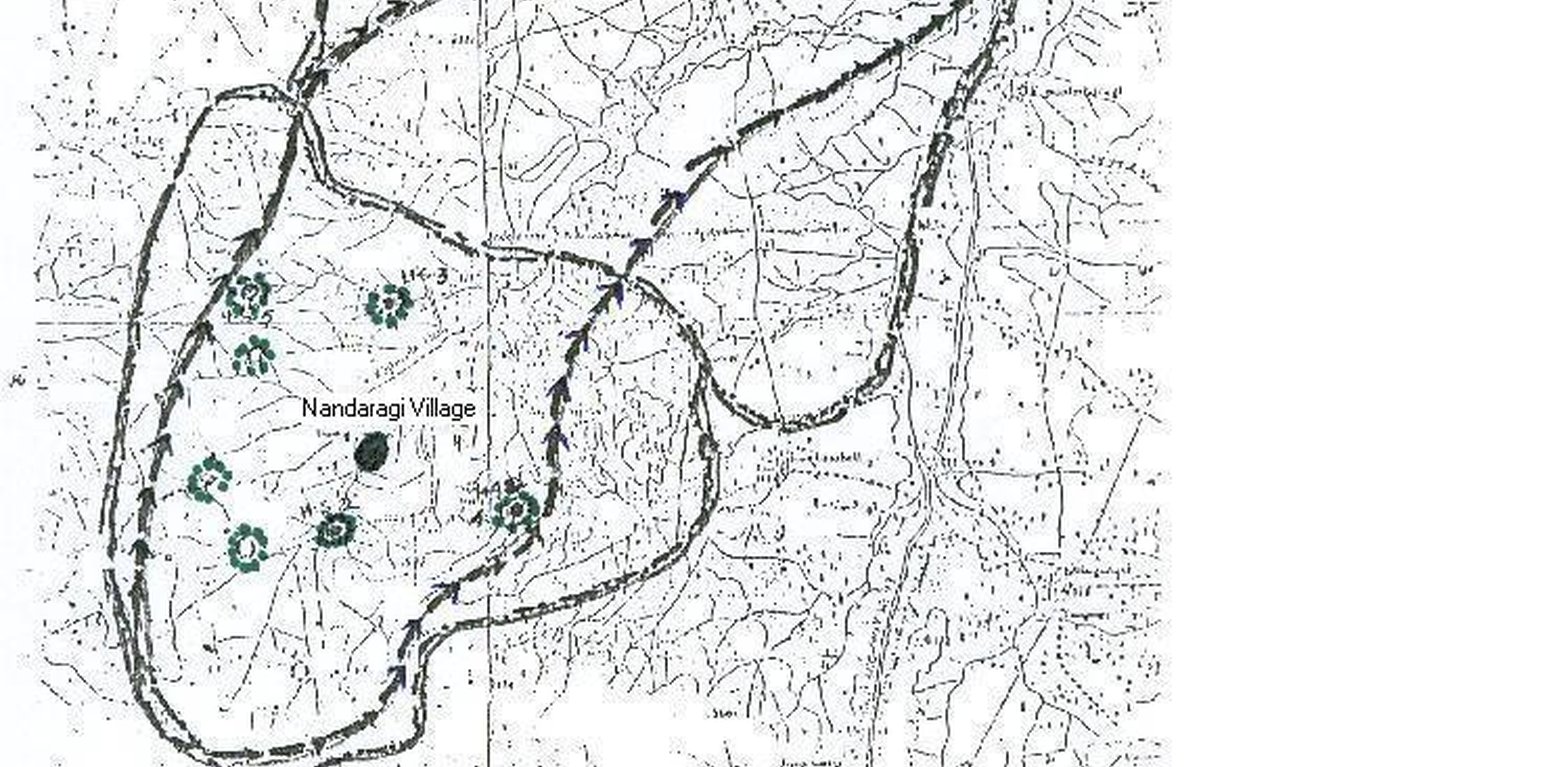



Aims / objectives: (1) to develop a feeling of ownership, (2) to compare the management of assets created during and after the project in the sustainable manner, (3) to develop capacity amongst the weeker section of the community especially women and resource person, (4) to involve the community at every stage of implementation of the project.
Methods: (1) Participatory Rural Appriasal (PRA), (2) village resourse mapping, (3) training and exposure visits, (4) formation of self help groups, users groups, cattle brreders association, (5) sharing of costs and responsibility (6) partnership with other NGOs, (6) establishment of linkages and networking (7) empowering the coimmnunity throough the livelihood support programs
Stages of implementation: (1) creating awareness, (2) PRA excercises, (3) formation of village level institutions, (4) microplanning, (5) capacity building measures, (6) sharing of cost and responsibilities of management of common property resorses, (7) associating with NGOs and other institutions in rural development (example MANAGE, ICRISAT, University of Agricultural Sciences etc)
Role of stakeholders: (A) participants are of four category (1) project staff (government), (2) members of village level institutions, (3) NGOs and other link organizations and other institutions, (4) international donors (B) Roles :- (1) providing technical support and guidance at every stage of implementation, (2) participation at every stage of implementation, sharing of cost and responsibilities (3) Providing additional technical support (4) providing financial support, guidance, monitoring & evaluation at every stage of implementation.
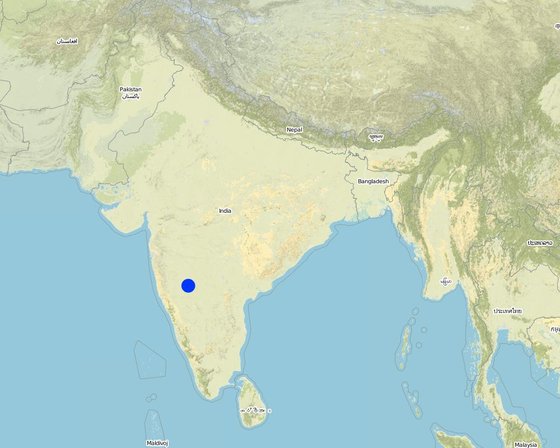
Lugar: Krnataka state, India
Dato de inicio: 1997
Año de conclusión: 2004
Tipo de Enfoque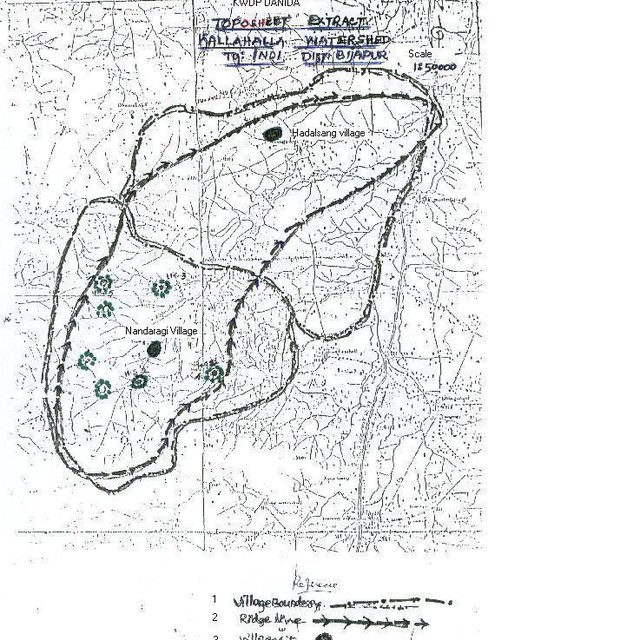
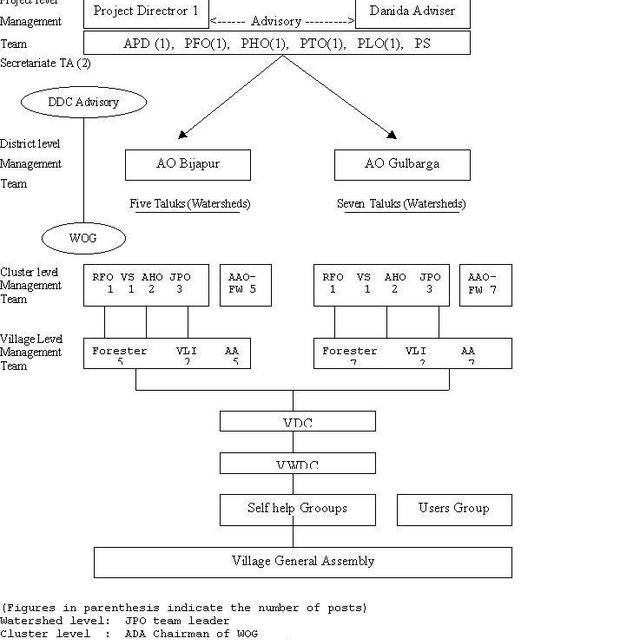
| ¿Qué partes interesadas/ entidades implementadoras estuvieron involucradas en el Enfoque? | Especifique las partes interesadas | Describa los roles de las partes interesadas |
| usuarios locales de tierras/ comunidades locales | Village level institutiosn like SHG, UG, CBA, VWDC etc. Specific ethnic groups: Labmani community | Men participation is more in VWDC and CBA while women participation is more in SHGs. the long lasting culture that women remain back and the men lead. The same thing was observed during the initial stages hwever there was considerable change in their understanding and attitude in the following years. Small land holders being part of the VWDC having authority to make decision about the activity to be implemented, they come from different SHGs, who are basically resource poor land users |
| ONG | ||
| gobierno nacional (planificadores, autoridades) | Government of India/ Govt. of Karnataka, Department of Agriculture and watershed development department | |
| organización internacional | Danida |
Project Level Organogram of the KWDP Danida Bijapur (India)
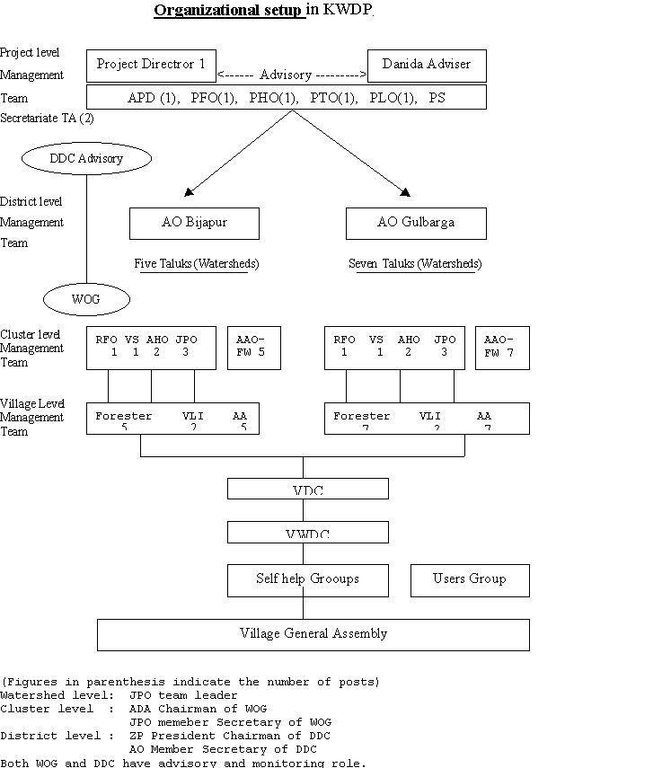
Las decisiones fueron tomadas por
La toma de decisiones se basa en
Regular training were conducted on the subject matter and other technical aspects of various SWC to be implemented in the upper reach, middle reach and in the lower reach etc, for the farmers and other members of VLI, along with the regular other trainings on accounting & book keeping, capacity building etc.
Not applicable
El trabajo de los usuarios de las tierras fue
Improvement in the farm development, orchard, silvi pasture etc., replication of the SWC technology etc.
The participatory approach used by the project helped the community to come closure and understand each other problems and work for the village development. The problem is likely to be overcome in the near future.
The other watershed development project in neighbourinng villages undertaken by KAWAD has also initiated the formationof cattle breeders association.